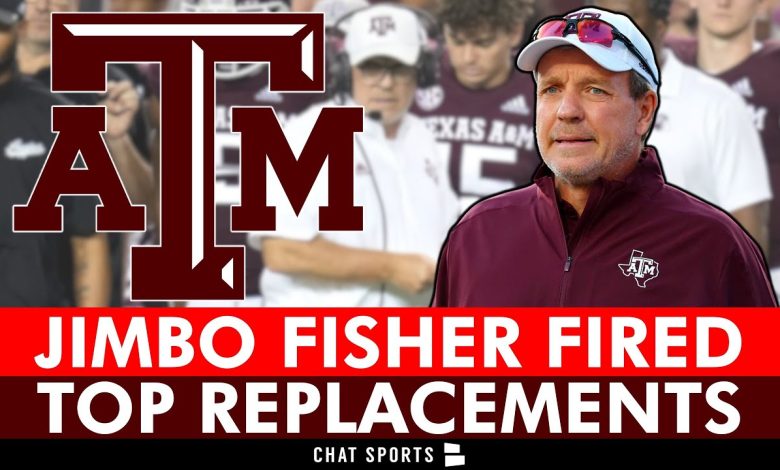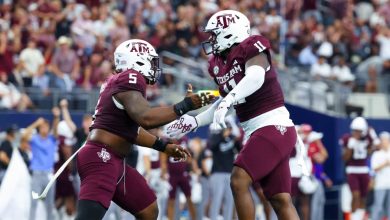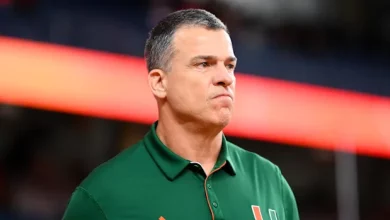Texas A&M Aggies’ 12th Man Foundation Losing Revenue Amid Jimbo Fisher Buyout

The Texas A&M Aggies have long been known for their passionate fan base, their storied football tradition, and their commitment to excellence in college athletics. Central to the Aggies’ financial and operational strength has been the 12th Man Foundation, a nonprofit organization designed to support the university’s athletic programs through fundraising and philanthropic donations. However, in recent months, the Foundation has been facing significant financial challenges, particularly as a result of the buyout of former head football coach Jimbo Fisher’s contract. The financial strain caused by this buyout is affecting the Foundation’s revenue streams and, by extension, the overall financial stability of Texas A&M’s athletic department.
This article will explore the economic impact of Jimbo Fisher’s buyout on the 12th Man Foundation, the ripple effects that are being felt throughout the Texas A&M athletic community, and the broader implications for college football programs that must navigate similar financial pressures. Additionally, we will examine how the situation reflects the larger financial landscape of college athletics, the increasing costs of coaching contracts, and the challenges that athletic departments face when it comes to balancing competitive aspirations with financial sustainability.
The Rise of the 12th Man Foundation
Before delving into the financial impact of Jimbo Fisher’s buyout, it’s important to understand the role of the 12th Man Foundation in the Texas A&M athletic ecosystem. Founded in 1975, the 12th Man Foundation is responsible for raising funds that directly support the university’s athletic programs, including scholarships, facilities, and other key initiatives. The organization plays a critical role in maintaining the competitive edge of Texas A&M’s athletics, particularly its football program, which has long been the centerpiece of the university’s sports culture.
One of the main functions of the Foundation is to manage donations from supporters, alumni, and fans. The Foundation helps to finance the university’s state-of-the-art athletic facilities, including the recently renovated Kyle Field, which stands as one of the most iconic stadiums in college football. Additionally, the Foundation plays a pivotal role in supporting scholarships for student-athletes, ensuring that Texas A&M remains competitive in recruiting top-tier talent. The 12th Man Foundation is also involved in initiatives aimed at improving fan engagement, providing game-day experiences, and fostering a deep sense of community around the Aggies’ athletic programs.
As Texas A&M has ascended in the ranks of college football over the past few decades, the 12th Man Foundation has grown significantly, both in terms of the volume of donations it raises and the influence it wields within the athletic department. The organization’s success has enabled the Aggies to remain competitive in the highly lucrative and high-stakes world of Southeastern Conference (SEC) football, where money, talent, and facilities are often the deciding factors between success and mediocrity.
Jimbo Fisher’s Contract and Buyout: A Double-Edged Sword
Jimbo Fisher’s tenure as the head coach of Texas A&M was marked by high expectations, substantial investment, and a desire to take the Aggies to the next level of college football. Fisher was hired in 2017 with one of the most lucrative contracts in college football history—a 10-year, $75 million deal that made him one of the highest-paid coaches in the country. The Aggies’ decision to invest so heavily in Fisher was a reflection of their ambitions to break into the elite ranks of college football, compete for SEC titles, and eventually win a national championship.
Fisher’s contract came with all the trappings of modern college football’s financial arms race. Massive buyouts, long-term commitments, and rising salary demands have become standard practice for programs that are seeking to remain competitive in the ever-evolving college football landscape. Texas A&M, with its enormous financial backing and fan support, was willing to pay a premium for a coach with a proven track record of success, particularly after Fisher won a national championship at Florida State in 2013.
However, after several seasons of underperformance, including a lackluster 2022 season, the Aggies made the difficult decision to part ways with Fisher, despite the significant financial commitment attached to his contract. The buyout of Fisher’s contract was a staggering $75 million, making it one of the largest coaching buyouts in the history of college football. This decision not only created a financial burden for the Texas A&M athletic department but also placed additional pressure on the 12th Man Foundation, which had been tasked with supporting the school’s athletic programs.
The Financial Strain on the 12th Man Foundation
The financial implications of Jimbo Fisher’s buyout have had a far-reaching impact on the 12th Man Foundation, which is responsible for generating much of the revenue that funds Texas A&M’s athletic programs. As one of the primary fundraising arms of the university’s athletic department, the Foundation has seen a reduction in its revenue in recent months, as the buyout of Fisher’s contract has diverted significant funds away from other essential areas.
One of the key ways the buyout has impacted the Foundation is through decreased donations and slower revenue growth. When the announcement of Fisher’s buyout was made, many fans and donors were disillusioned by the failure to meet the expectations set by Fisher’s high salary and lofty promises of championship contention. Fans who had been enthusiastic supporters of the Aggies’ football program and the 12th Man Foundation began to question the value of their contributions, particularly in light of the large sum of money required to pay Fisher’s buyout. As a result, some donors have reduced or redirected their contributions, leading to a decline in overall revenue for the Foundation.
Moreover, the financial uncertainty surrounding the buyout has made some donors more cautious in their giving, as they wait to see how the Aggies will navigate this challenging period. With the financial resources tied up in the buyout, the 12th Man Foundation has had to reassess its priorities and make difficult decisions regarding where to allocate funds. While the Foundation’s core mission remains the same—supporting the athletic programs at Texas A&M—the financial pressure caused by Fisher’s buyout has forced the organization to reevaluate how it raises and distributes funds.
In addition to reduced donations, the Foundation has also faced increased competition from other programs across the country. As the financial arms race in college football continues, other schools have stepped up their fundraising efforts, offering more attractive incentives to potential donors. In this climate, the 12th Man Foundation has had to work harder to retain its current supporters and attract new ones, all while grappling with the lingering effects of the Fisher buyout.
Impact on Other Athletic Programs
While the immediate focus has been on football, the financial strain caused by Jimbo Fisher’s buyout has the potential to affect other Texas A&M athletic programs as well. The 12th Man Foundation supports not only football but also a wide range of other sports, including basketball, baseball, soccer, and track and field. As revenue from donations decreases, the Foundation may face challenges in providing the same level of financial support to these programs.
Athletic programs at Texas A&M—especially those that are not revenue-generating like football—rely heavily on donations and financial support from the 12th Man Foundation to fund scholarships, facilities, travel expenses, and equipment. If the Foundation’s revenue continues to decline, these programs may experience cuts to their budgets, which could have a significant impact on their competitiveness. In a conference like the SEC, where resources are plentiful and competition is fierce, any reduction in funding could result in a tangible disadvantage for non-football programs.
The ripple effects of the buyout could also be felt in recruitment and retention efforts. With the Aggies’ athletic programs facing financial challenges, prospective student-athletes may be hesitant to commit to Texas A&M if they perceive a lack of resources or support. This could ultimately impact the long-term success of the university’s sports programs, as recruiting top-tier talent is essential to maintaining competitive programs across the board.
The Broader Implications for College Football
The situation at Texas A&M is not an isolated one. Across the country, coaching contracts and buyouts have become a significant financial burden for many college football programs. As the arms race for top-tier coaches continues, schools are increasingly finding themselves locked into massive financial commitments that can have long-lasting consequences. While elite programs like Texas A&M may have the financial backing to absorb these costs in the short term, the financial strain can become unsustainable over time.
For schools with less financial flexibility, the rising costs of coaching contracts and buyouts can have a devastating impact. These schools may be forced to make difficult choices about where to allocate resources, potentially sacrificing investments in other areas such as facilities, scholarships, and overall program development. The trend toward larger coaching salaries and buyouts may also contribute to the increasing financial disparities between power programs and mid-tier or smaller programs, further exacerbating the competitive imbalance in college football.
Additionally, the reliance on donations and fundraising by organizations like the 12th Man Foundation highlights the growing importance of fan engagement and support in college athletics. With fans increasingly being asked to contribute more financially, schools must be transparent and accountable to their supporters in order to maintain their loyalty and engagement.
Navigating Financial Strain in College Athletics
The financial strain caused by Jimbo Fisher’s buyout is a significant challenge for Texas A&M’s 12th Man Foundation and its athletic programs. While the Foundation has long been a cornerstone of the university’s athletic success, the economic impact of the buyout has forced it to confront difficult realities. Reduced donations, increased competition from other programs, and the need to balance funding across multiple sports are just some of the challenges the Foundation faces in the wake of this buyout.
As Texas A&M navigates this financial strain, it must find a way to restore its revenue streams, maintain competitive programs, and ensure that the long-term success of its athletic department is not compromised. The situation at Texas A&M is a reminder of the complex financial landscape of college athletics, where large coaching contracts, buyouts, and fundraising efforts are all intertwined in the race for success. How Texas A&M and other programs handle these financial challenges will have lasting implications for the future of college football and college athletics as a whole.









